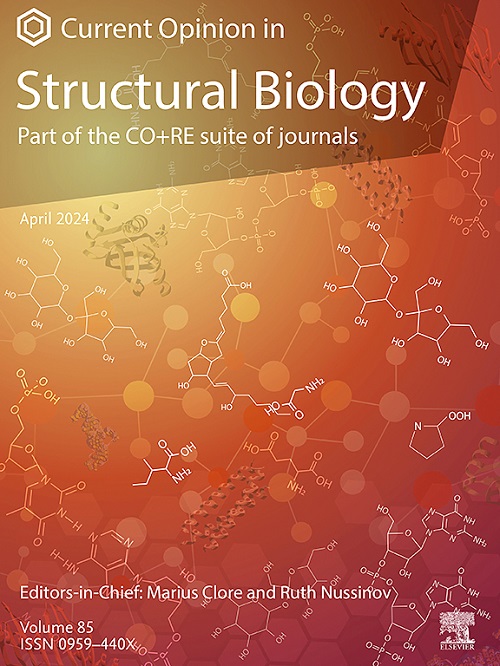Machine learning methods to study sequence–ensemble–function relationships in disordered proteins
IF 6.1
2区 生物学
Q1 BIOCHEMISTRY & MOLECULAR BIOLOGY
引用次数: 0
Abstract
Recent years have seen tremendous developments in the use of machine learning models to link amino-acid sequence, structure, and function of folded proteins. These methods are, however, rarely applicable to the wide range of proteins and sequences that comprise intrinsically disordered regions. We here review developments in the study of sequence–ensemble–function relationships of disordered proteins that exploit or are used to train machine learning models. These include methods for generating conformational ensembles and designing new sequences, and for linking sequences to biophysical properties and biological functions. We highlight how these developments are built on a tight integration between experiment, theory and simulations, and account for evolutionary constraints, which operate on sequences of disordered regions differently than on those of folded domains.
研究无序蛋白质中序列-集成-功能关系的机器学习方法
近年来,机器学习模型在连接折叠蛋白质的氨基酸序列、结构和功能方面取得了巨大的发展。然而,这些方法很少适用于包含内在无序区域的大范围蛋白质和序列。我们在这里回顾了无序蛋白质序列-集成-函数关系研究的进展,这些研究利用或用于训练机器学习模型。这些包括生成构象集成和设计新序列的方法,以及将序列与生物物理特性和生物功能联系起来的方法。我们强调这些发展是如何建立在实验、理论和模拟之间的紧密结合上的,并解释了进化约束,这些约束在无序区域序列上的作用不同于折叠区域的序列。
本文章由计算机程序翻译,如有差异,请以英文原文为准。
求助全文
约1分钟内获得全文
求助全文
来源期刊

Current opinion in structural biology
生物-生化与分子生物学
CiteScore
12.20
自引率
2.90%
发文量
179
审稿时长
6-12 weeks
期刊介绍:
Current Opinion in Structural Biology (COSB) aims to stimulate scientifically grounded, interdisciplinary, multi-scale debate and exchange of ideas. It contains polished, concise and timely reviews and opinions, with particular emphasis on those articles published in the past two years. In addition to describing recent trends, the authors are encouraged to give their subjective opinion of the topics discussed.
In COSB, we help the reader by providing in a systematic manner:
1. The views of experts on current advances in their field in a clear and readable form.
2. Evaluations of the most interesting papers, annotated by experts, from the great wealth of original publications.
[...]
The subject of Structural Biology is divided into twelve themed sections, each of which is reviewed once a year. Each issue contains two sections, and the amount of space devoted to each section is related to its importance.
-Folding and Binding-
Nucleic acids and their protein complexes-
Macromolecular Machines-
Theory and Simulation-
Sequences and Topology-
New constructs and expression of proteins-
Membranes-
Engineering and Design-
Carbohydrate-protein interactions and glycosylation-
Biophysical and molecular biological methods-
Multi-protein assemblies in signalling-
Catalysis and Regulation
 求助内容:
求助内容: 应助结果提醒方式:
应助结果提醒方式:


